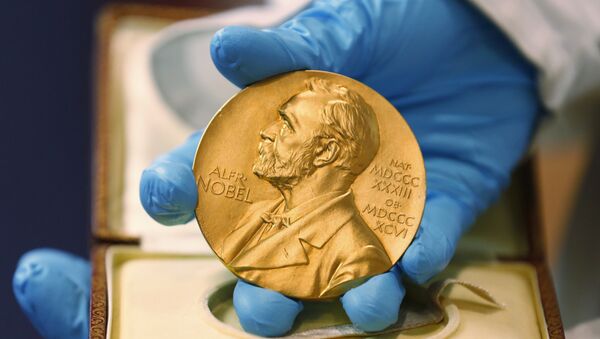Notably, Thomson Reuters's annual Citation Laureates study has managed to predict 39 Nobel Prize winners; some of them managed to bag their prizes only a year or more later than the one predicted by Thomson Reuters, though.
Each year, the company makes forecasts related to "the most influential researchers in chemistry, physics, physiology or medicine, and economics," who are due to win the relevant Nobel prizes.
This year's candidates include 24 scientists from five countries, with 15 of them working at American institutes, according to Gazeta.ru.
The first group includes James Allison, Jeffrey Bluestone and Craig Thompson, who may grab the prize "for explaining how CD28 and CTLA-4 are regulators of T-cell activation, modulating immune response'" These scientists' developments may make it possible to replace chemotherapy with immunotherapy in the future.
The second group consists of Gordon Freeman, Tasuku Honjo and Arlene Sharpe, who are expected to get the prize for "elucidating programmed cell death-1 (PD-1) and its pathway, which has advanced cancer immunotherapy."
The third group, consisting of Michael Hall, David Sabatini and Stuart Schreiber managed to discover the growth regulator Target of Rapamycin (TOR) and the mechanistic Target of Rapamycin (mTOR) which may can lead to prostate cancer.
As for the 2016 Nobel Prize in Physics, most experts, including those from Thomson Reuters, are giving kudos to Ronald Drever, Kip Thorne and Rainer Weiss "for the development of the Laser Interferometer Gravitational-Wave Observatory (LIGO) that made possible the detection of gravitational waves," already touted as the physical discovery of the year.
In the field of economics, the 2016 Nobel Prize favorites include Olivier Blanchard, who made a significant contribution to macroeconomics, "including determinants of economic fluctuations and employment."
Two other favorite are Edward Lazear, who may win the prize "for his development of the distinctive field of personnel economics", and Marc Melitz, "for pioneering descriptions of firm heterogeneity and international trade."





